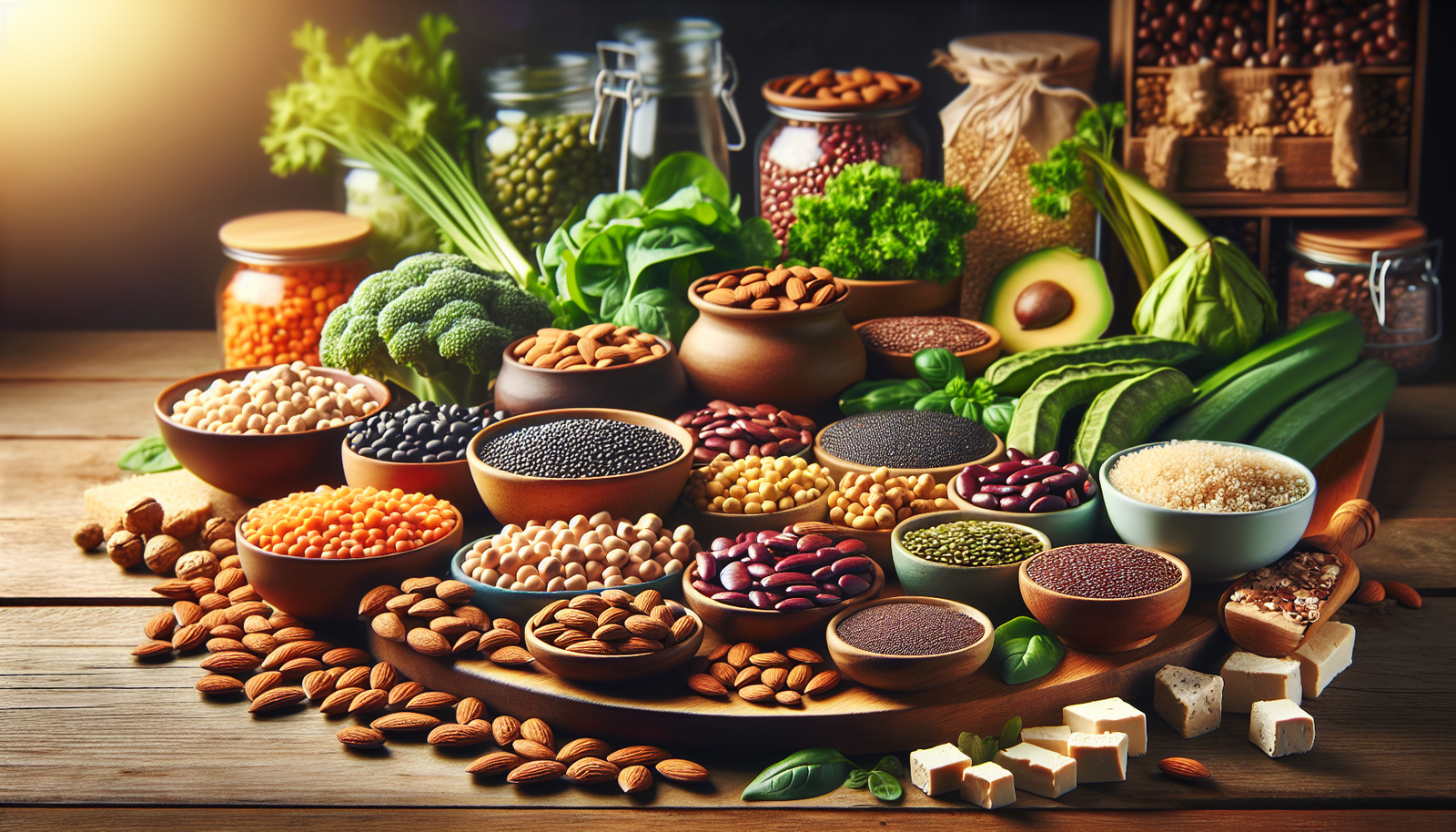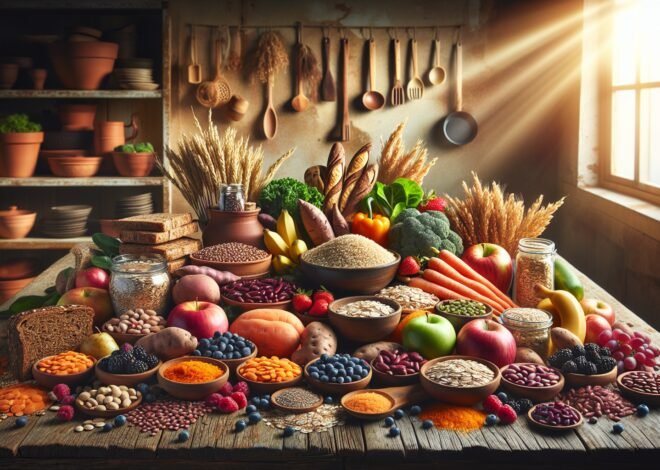
Best Plant-Based Proteins for a Balanced Vegetarian Diet
Plant-based proteins for a balanced diet are increasingly essential in today’s health-conscious world. With vegetarianism on the rise, many are turning to plant-based protein sources to ensure a nutritionally diverse diet. Did you know that lentils and quinoa can provide the essential amino acids your body needs? This post will explore some of the most effective plant-based options like chickpeas and tempeh, alongside pairing ideas to help you maintain a balanced diet. With this insight, you’ll grasp how to incorporate these proteins into your meals effectively, ensuring both flavor and nutrition.
Introduction to Plant-Based Proteins for a Balanced Diet
Plant-based proteins have surged in popularity, drawing attention from health enthusiasts and nutritionists alike. These nutrients are not just for vegetarians; they offer a variety of benefits for anyone looking to maintain a balanced diet. Understanding their role in our diet is crucial for maximizing their benefits. In this section, we will unravel the importance of plant-based proteins, dispel common myths, and explore the positive impacts they can have on health.
Understanding the Importance of Protein in Vegetarian Diets
Proteins are the building blocks of life. They support numerous bodily functions, including tissue repair and enzyme production. In vegetarian diets, obtaining adequate protein can be more challenging, as animal products are not the primary source. However, plant-based proteins provide an excellent alternative, ensuring vegetarians still meet their nutritional needs. Plant proteins not only support muscle maintenance but also aid in weight management and metabolic health.
Several plant-based foods are rich in proteins, including legumes, nuts, seeds, and grains. These foods offer a range of nutrients while being naturally low in saturated fats. For vegetarians, including a variety of these protein sources ensures a balanced intake of essential amino acids, which are vital for optimal body function. The diverse array of plant proteins allows for a nutritious and varied diet, which is key to long-term health.
Common Misconceptions About Plant-Based Proteins
There’s a lingering belief that plant-based proteins are inferior to animal proteins. This misconception stems from the idea that plant proteins lack certain amino acids. However, with careful planning, a plant-based diet can provide all essential amino acids. Consuming a variety of protein sources ensures a complete amino acid profile, just as effectively as animal proteins.
Another myth is that plant proteins are less effective for muscle building. Yet, numerous studies indicate that plant proteins can support muscle growth and recovery when consumed in adequate amounts. Protein quality is indeed important, but the overall dietary pattern plays a more significant role than individual protein sources. Emphasizing diverse plant-based foods can negate any perceived shortcomings.
Benefits of Incorporating Plant-Based Proteins
Incorporating plant-based proteins into your diet comes with a host of benefits. These proteins are typically lower in calories and fats compared to animal proteins, which can assist in weight management. They are also rich in fiber, aiding digestion and promoting a healthy gut. Additionally, plant proteins have been associated with lower risks of heart disease, hypertension, and certain cancers.
The environmental impact of plant-based diets is another significant benefit. They tend to be more sustainable, requiring fewer resources and generating less greenhouse gas emissions than animal-based diets. By choosing plant proteins, individuals can contribute to environmental conservation while enhancing their well-being. This dual advantage makes plant-based diets appealing to health-conscious and environmentally aware individuals.
Top Sources of Plant-Based Proteins
Understanding where to find plant-based proteins is essential for integrating them into your diet effectively. This section will guide you through some of the top sources, including legumes, nuts, seeds, and whole grains. Each of these categories offers unique nutritional benefits and can easily be incorporated into your daily meals.
Legumes: Lentils, Chickpeas, and Peas
Legumes are a cornerstone of plant-based diets, offering significant protein content along with other vital nutrients. Lentils, chickpeas, and peas are particularly popular due to their versatility and health benefits.
Lentils are rich in protein and fiber, supporting heart health and digestion. They cook quickly and can be used in soups, salads, or as a meat substitute in various dishes. Chickpeas, known as garbanzo beans, provide a nutty flavor and are high in protein and fiber. They’re perfect for making hummus, adding to salads, or roasting for a crunchy snack. Peas are another excellent source, known for their protein content and vitamins. They can be used fresh, frozen, or dried in various recipes, from soups to stews.
Each of these legumes offers unique flavors and textures, making them a versatile choice for meals. Their high fiber content promotes satiety, which can aid in weight management.
Nuts and Seeds: Nutrient Powerhouses
Nuts and seeds are small but mighty sources of protein. They are packed with healthy fats, vitamins, and minerals, making them a valuable addition to any diet.
Almonds, walnuts, and cashews are popular nuts providing protein, fiber, and essential fatty acids. They can be eaten raw, roasted, or added to dishes for extra crunch and nourishment. Seeds, such as chia, flaxseed, and hemp, are exceptional for their omega-3 fatty acids and protein. They can be sprinkled on yogurt, mixed into smoothies, or used in baking.
These nutrient powerhouses contribute to heart health, brain function, and overall wellness. Incorporating a variety of nuts and seeds ensures a broader spectrum of nutrients, enhancing your diet’s nutritional profile.
Whole Grains: Quinoa, Amaranth, and More
Whole grains are an integral part of plant-based diets, offering protein along with fiber and essential nutrients. Grains such as quinoa and amaranth are particularly noteworthy for their protein content and versatility.
Quinoa is often referred to as a supergrain due to its complete protein profile. It is gluten-free and can be used in salads, as a side dish, or as a base for bowls. Amaranth, rich in protein and minerals, is another gluten-free grain that can be used similarly to quinoa. Other grains like brown rice and oats also provide protein and are staples in many diets.
These grains not only offer protein but also promote a feeling of fullness, helping with weight management. Including a variety of whole grains ensures you receive a wealth of nutrients and can enjoy diverse flavors and textures in your meals.
Maximizing Nutrient Intake with Plant-Based Proteins
Getting the most out of plant-based proteins involves more than just choosing the right foods. It’s about optimizing your intake and ensuring you receive all essential nutrients. This section will explore how to combine proteins, cooking techniques, and meal planning to create a balanced and nutritious diet.
Combining Different Proteins for Complete Amino Acids
Combining different plant proteins is crucial for obtaining complete amino acids. While individual plant proteins may lack one or more essential amino acids, pairing them can balance their nutritional profile.
Examples of complementary protein combinations include:
- Rice and beans
- Peanut butter on whole-grain bread
- Hummus and pita bread
These combinations ensure you receive all the essential amino acids your body needs. Eating a variety of plant-based proteins throughout the day can help meet these needs without relying solely on a single source.
Essential Cooking Techniques for Plant-Based Ingredients
Cooking methods can significantly impact the nutritional value of plant-based foods. To retain nutrients, consider using techniques such as steaming, grilling, and sautéing.
Steaming preserves vitamins and minerals in vegetables, making it an excellent choice for preparing greens and legumes. Grilling adds flavor without the need for excessive oils, suitable for vegetables and plant-based patties. Sautéing with healthy oils like olive or coconut enhances flavors and allows for quick cooking, maintaining nutrient content.
These techniques not only help maintain nutritional integrity but also enhance the flavors of plant-based dishes, making them more enjoyable and satisfying.
Meal Planning Tips for a Balanced Plant-Based Diet
Effective meal planning is essential for maintaining a balanced plant-based diet. It ensures variety, nutrient adequacy, and satisfaction.
Consider these meal planning tips:
- Variety is Key: Incorporate different sources of plant proteins to provide a wide range of nutrients.
- Prep Ahead: Prepare meals in advance to save time and ensure healthy options are always available.
- Focus on Balance: Include a mix of proteins, carbohydrates, and healthy fats in each meal.
- Use Seasonal Ingredients: They tend to be more nutritious and flavorful.
By following these tips, you can enjoy a well-rounded plant-based diet that meets all nutritional needs while delighting your taste buds.
Conclusion
Plant-based proteins are an essential component of a balanced diet due to their high nutrient content and health benefits. Sources include legumes, nuts, seeds, grains, and soy products. These proteins provide necessary amino acids, vitamins, and minerals while being low in saturated fats. They support heart health, weight management, and lower the risk of chronic diseases. Incorporating diverse plant-based proteins can ensure adequate protein intake and nutritional variety.
FAQ
What are the best plant-based proteins for a balanced diet?
Top plant-based protein sources include lentils, chickpeas, quinoa, tofu, tempeh, and beans. Nuts, seeds, and green leafy vegetables provide excellent protein and nutrient content. These options offer a versatile and nutritious foundation for any balanced diet.
How can I incorporate plant-based proteins into my daily meals?
Add beans to salads or soups, use lentils in stews, and opt for quinoa as a grain substitute. Tofu and tempeh work well in stir-fries or grilled dishes. Snacking on nuts and seeds can also boost your protein intake effortlessly.
Are plant-based proteins sufficient for building muscle?
Yes, plant-based proteins support muscle growth when consumed in adequate amounts. Combining different sources ensures a complete amino acid profile. Pair them with strength training exercises for optimal results.
What are the health benefits of consuming plant-based proteins?
Plant-based proteins offer numerous health advantages, including lower cholesterol and reduced risk of heart disease. They are often rich in fiber, promoting digestive health and weight management. These proteins also contribute to improved energy levels and overall well-being.
How does plant-based protein compare to animal protein in nutritional value?
While plant-based proteins may lack certain amino acids, they are generally lower in saturated fat and cholesterol. Animal proteins often provide a more complete amino acid profile, but a varied plant-based diet can achieve similar nutritional results when carefully planned.
Can a plant-based protein diet meet all essential amino acids requirements?
Yes, a well-planned plant-based diet can fulfill all essential amino acid needs. Mixing different protein sources, such as legumes and grains, ensures a complete amino acid profile. Prioritizing variety and balance is key to achieving nutritional adequacy.











